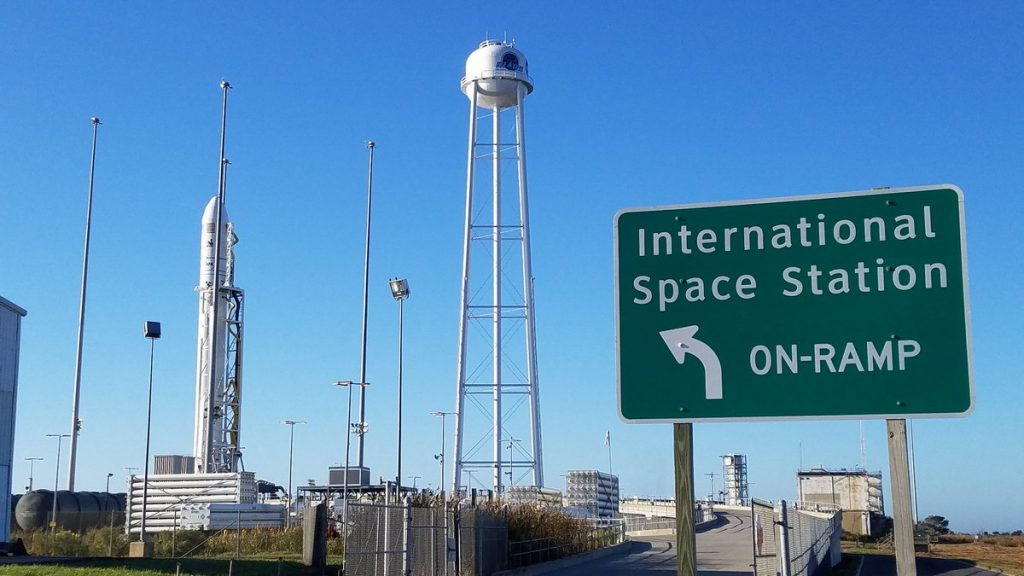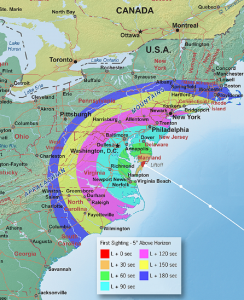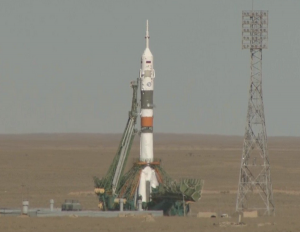
Another stunning nighttime launch of the Antares rocket is planned from NASA’s Wallops Flight Facility on the Virginia coast; the lift-off should be visible across a large part of the Mid Atlantic in the dark pre-dawn skies. Previously known as Orbital ATK’s rocket, Northrop Grumman which acquired the company in June, plans to launch its Antares from NASA Wallops on the early morning of Thursday, November 15 no earlier than 4:49am, when the launch window opens. The large rocket launch will be visible in the dark sky for hundreds of square miles as long as Mother Nature cooperates. The Antares rocket will carry the cargo craft Cygnus to space. Cygnus will deliver vital equipment, supplies and scientific experiments to astronauts aboard the International Space Station (ISS). This mission is known as NG-10.
Designed to provide responsive and low-cost access to space, Antares is a two-stage vehicle that provides low-Earth orbit (LEO) launch capability for payloads weighing up to 8,000 kg. Internally funded by Orbital ATK, Antares completed a risk reduction mission and a demonstration of commercial re-supply services for the ISS under a NASA Commercial Orbital Transportation Services (COTS) agreement in 2013. Orbital ATK commenced delivery of cargo to the ISS under the NASA Commercial Resupply Services (CRS) contract in 2014. The company will conduct three additional missions in 2018 and 2019 to fulfill the CRS1 agreement with NASA to deliver supplies to the space station. Northrop Grumman will also conduct the first mission under the CRS2 contract in 2019, which on its own is for 6 missions to the ISS.

The last launch of the Antares rocket at NASA Wallops occurred last spring on May 20; that mission, the OA-9, brought 6,200kg of supplies to the ISS. Prior to OA-9, an Antares rocket lifted off from Wallops on November 12, 2017; that mission successfully brought 7,400 pounds of supplies and science to the ISS.
Cargo is delivered to the station using Cygnus spacecraft. The Cygnus spacecraft consists of two modules: the Service Module (SM) which incorporates the avionics, propulsion and power systems from Orbital ATK’s LEOStar and GEOStar spacecraft buses; and the Pressurized Cargo Module (PCM) which carries the crew supplies, spares and scientific experiments. The SM is integrated and tested at Northrop Grumman’s Dulles, Virginia satellite manufacturing facility. The PCM is supplied by Thales Alenia Space and is produced in Turin Italy.

The ISS has had some drama recently with an aborted launch of astronauts to it just weeks ago. On October 11, the Soyuz rocket malfunctioned after lift-off. However, the one Russian and one American on-board safely returned to Earth after an abort procedure was successfully initiated. The Soyuz, the only way to get people to/from the ISS, is grounded until the reason for the malfunction is understood and rectified. The Soyuz capsule connected to the station now for the three people that remain on-board can’t be used beyond December. If the Soyuz issue isn’t rectified soon, the three on-board the ISS will need to evacuate the ISS leaving it unmanned for 2019. “The Soyuz rocket will be launched only after the inquiry has identified the causes of the emergency and measures have been taken to prevent such situations in the future,” Sergei Krikalev, Cosmonaut, and Head of Human Spaceflight for Russia, said in a statement released to the Russian news agency. Roscosmos, the Russian Space Agency, plans to launch three unmanned flights before putting humans back on them. In an update released days ago, Roscosmos says they may be able to wrap up their review and begin preparations for a robotic launch as soon as the end of next week.
We reached out to NASA and Northrop Grumman for comments with how the Soyuz incident could impact this planned Mid Atlantic launch. A NASA spokesperson told us the launch continues to go on as planned while we’ve yet to hear back from Northrop Grumman.